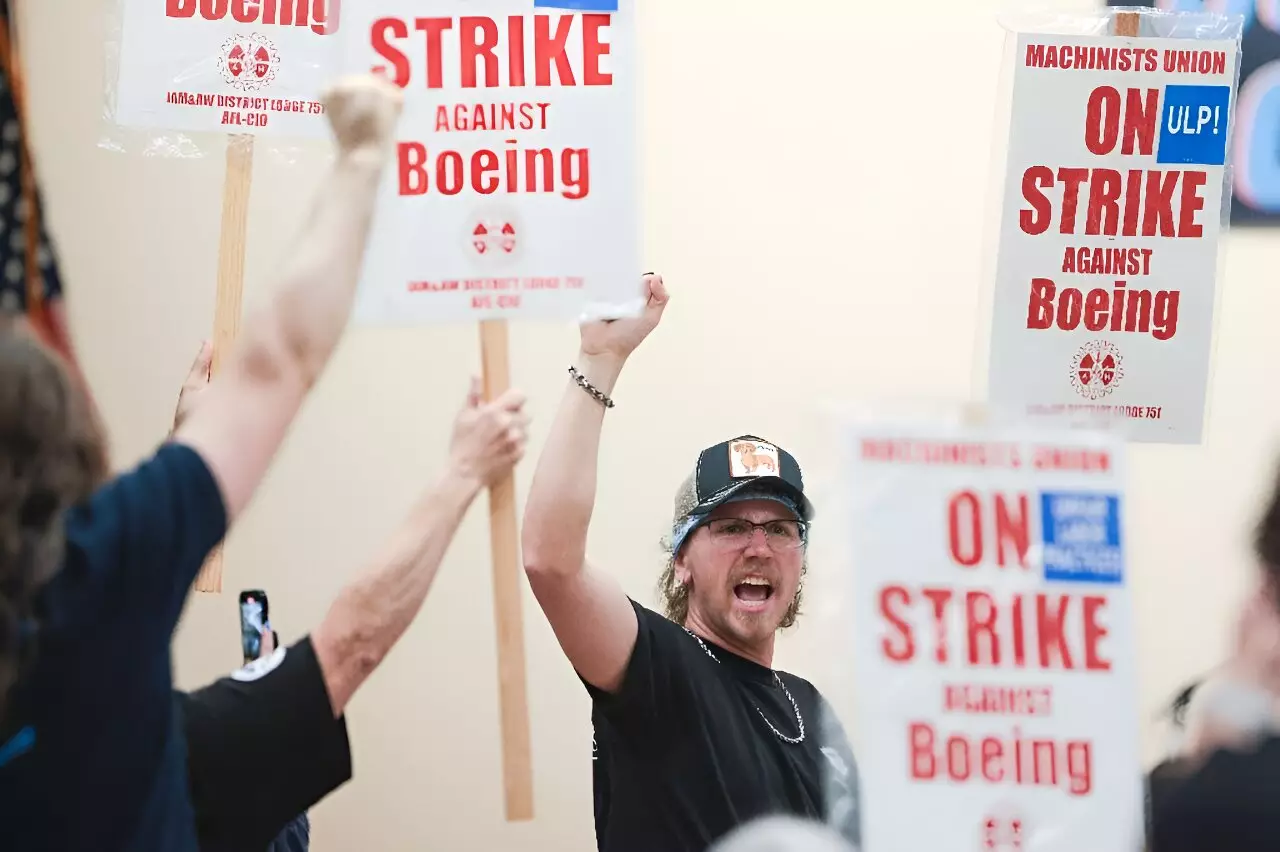The recent strike by Boeing factory workers marks a pivotal moment in labor relations within one of the world’s largest aerospace manufacturers. The strike, which began on a Friday and is notable as the first walkout at Boeing in 16 years, has been driven by widespread dissatisfaction among workers regarding wage proposals and working conditions. This discontent was made evident when an overwhelming majority—94.6 percent—of union members from IAM-District 751 voted against a tentative contract offer. Moreover, a staggering 96 percent voted in favor of the strike, indicating an unprecedented level of unity among the workforce.
In an effort to resolve the ongoing conflict, union representatives have announced the involvement of federal mediators assigned through the Federal Mediation and Conciliation Service (FMCS). This intervention underscores the seriousness of the situation, as it reflects the strained relationships between Boeing management and its employees. Talks are set to resume under these mediators, which may help facilitate a productive dialogue. However, the effectiveness of this mediation remains to be seen, especially given the history of previous negotiations, which have frequently concluded in disputes rather than resolutions.
Boeing’s current economic landscape is fraught with challenges. The company is grappling with financial strains and has expressed eagerness to return to the negotiating table. Despite these management assertions, workers have expressed their discontent over what they perceive as inadequate wage increases. The proposed 25-percent wage increase over four years is viewed as minimal and insufficient, particularly after years of stagnant wages that have not kept pace with rising living costs. This disparity between management’s proposals and the workers’ expectations has led to a sentiment of disillusionment among the rank-and-file.
The strike’s consequences extend beyond immediate labor disputes; they significantly impact Boeing’s operational capabilities. With the work stoppage shutting down key assembly plants for airplanes like the 737 MAX and 777, delays in production are inevitable. These delays could exacerbate Boeing’s already troubled financial recovery efforts, as the company has struggled to meet customer demands and timelines in the shadow of its ongoing challenges.
Moreover, the union’s call for a robust presence on the picket lines signifies a movement not solely about wages but a broader fight for dignity and respect within the workplace. Maximizing their visibility aims to convey a strong message—workers are united, empowered, and unwilling to settle for less than they deserve.
As negotiations resume next week, the focus will inevitably shift to how both sides can bridge the gap between expectations and offerings. The successful resolution of this strike may set a precedent for future labor negotiations within the aerospace industry and beyond. Ultimately, whether through federal mediation or direct negotiations, the outcome of these discussions holds critical implications not only for Boeing’s workforce but also for the broader narrative of labor relations in America. Will the voices of the workers be heard, or will corporate strategies prevail? Only time will tell.


Leave a Reply